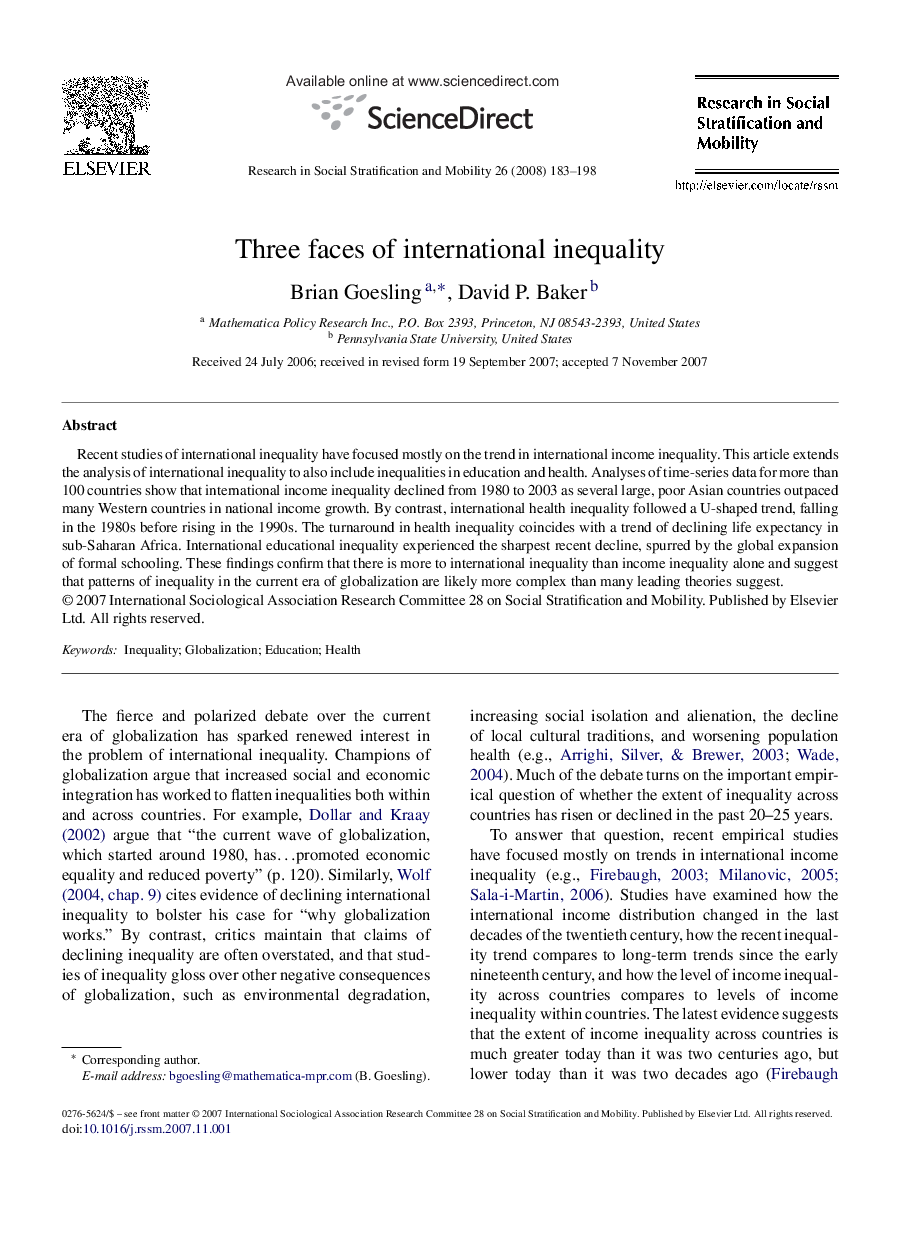| Article ID | Journal | Published Year | Pages | File Type |
|---|---|---|---|---|
| 999763 | Research in Social Stratification and Mobility | 2008 | 16 Pages |
Recent studies of international inequality have focused mostly on the trend in international income inequality. This article extends the analysis of international inequality to also include inequalities in education and health. Analyses of time-series data for more than 100 countries show that international income inequality declined from 1980 to 2003 as several large, poor Asian countries outpaced many Western countries in national income growth. By contrast, international health inequality followed a U-shaped trend, falling in the 1980s before rising in the 1990s. The turnaround in health inequality coincides with a trend of declining life expectancy in sub-Saharan Africa. International educational inequality experienced the sharpest recent decline, spurred by the global expansion of formal schooling. These findings confirm that there is more to international inequality than income inequality alone and suggest that patterns of inequality in the current era of globalization are likely more complex than many leading theories suggest.
